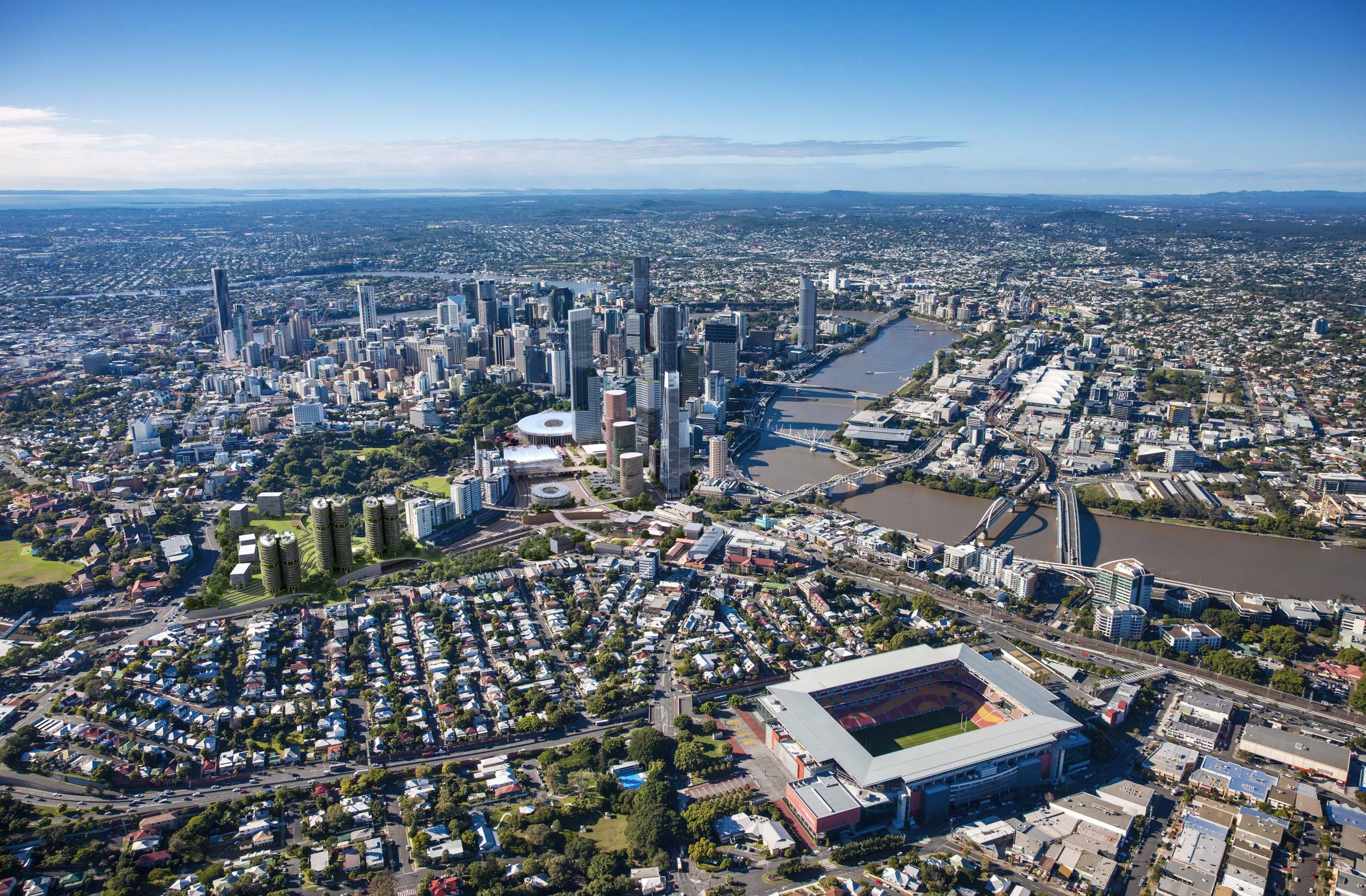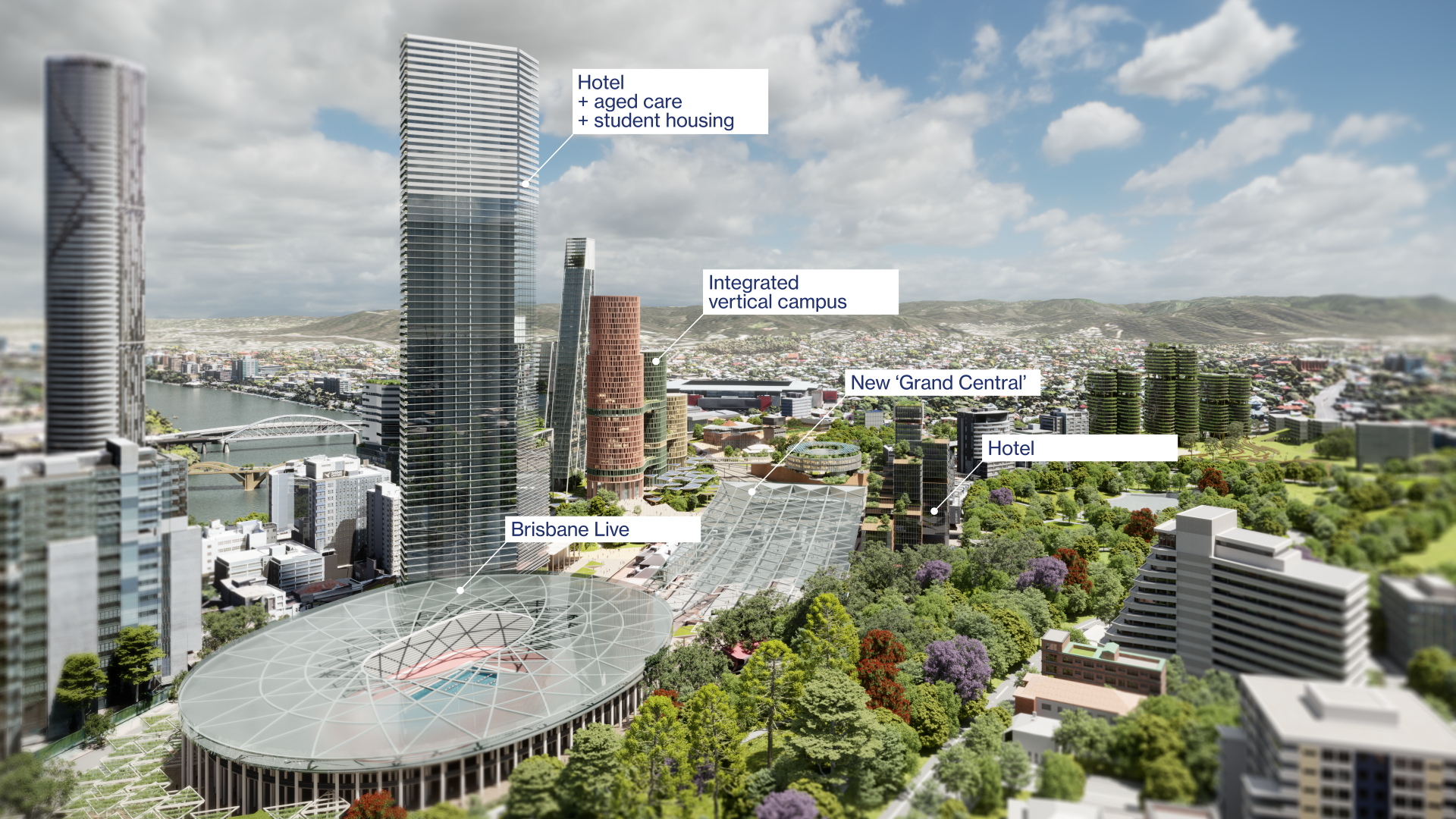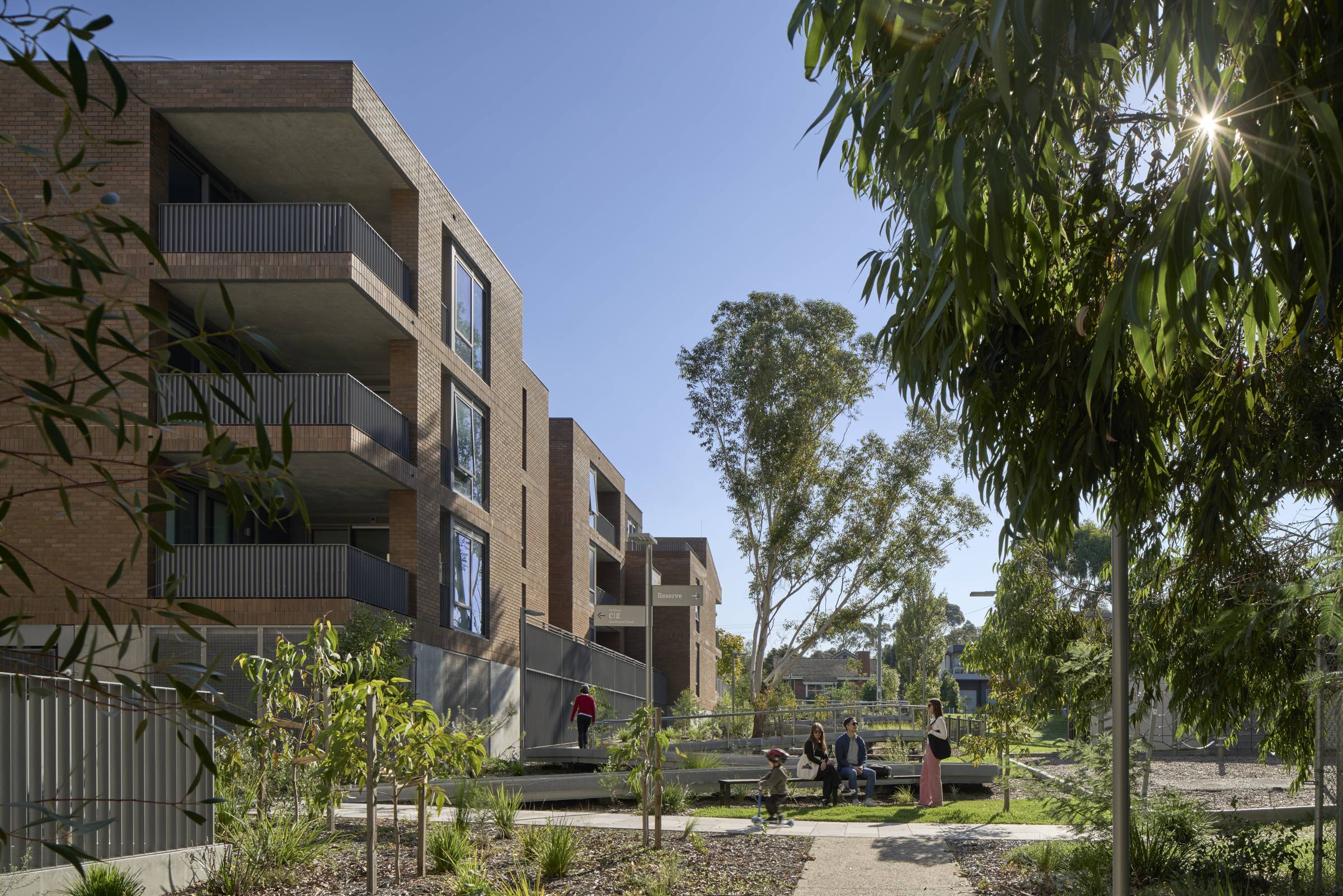Architectus has revealed a bold vision for the Roma Street Precinct, stitching together layers of culture, history, and development to create a more connected, sustainable, and magnetic place for the future.
We shared our concepts in a fly-through showing new bridges and boulevards for walkers and cyclists, green spaces for gathering and truth-telling, viewing platforms over the river, and revitalised heritage buildings. We have also imagined a new ‘Grand Central’ for Brisbane, with a canopy stretching from train station to parklands.
The ideas are the outcome of our latest ‘Charrette’, an annual event bringing together Architectus designers from different geographies, disciplines, and experience levels to respond to a unique design challenge. In 2022, our task was to imagine a new future for this important Brisbane precinct, where growth – new roads and rail in particular – has constrained the area’s rich history and future potential.
A hallmark of our practice, the Brisbane Charrette marked the 14th year of these much-anticipated design events. The collective effort reflects the ethos of the practice – giving designers a chance to share and explore powerful new ideas for Australia’s future cities.
At each gathering our design teams are joined by industry leaders, who share their knowledge and brief them on the task. For the Brisbane Charrette those collaborators included urban design and architecture academics, sustainability experts and First Nations contributors.
Together, we explored the challenges and characteristics of the precinct, which stretches from the riverfront to the far side of Roma Street Parkland, with Turbot Street and Petrie Terrace marking its boundaries on either side. Part of the city’s ‘knowledge corridor’ for entrepreneurs and researchers, the precinct is already the focus of major renewal efforts.
Architectus CEO, Ray Brown said: “Our design team’s bold vision for the Roma Street Precinct benefits Brisbane’s status as a growing global city and future Olympic host. The concept creates a multi-connected, inclusive place where people can come together to enjoy many of the city’s greatest features.
“I’m proud of the creative, thoughtful solutions our designers develop in our Charrettes. It’s a testament to the collective power of different perspectives, backgrounds, and experiences, even in the face of a complex challenge.”

THE DESIGN CONCEPT
The overarching vision for Roma Street
The vision for the precinct involved weaving together the layers of this shared space – a site of ceremony, a meeting ground, a water story, a community – to focus on local economic development, social resilience, and connectivity.
The Roma Street precinct – known as Wilwinpa – was once a gathering place for tournaments and ceremony. The colonial city cut First Nations groups off from the tournament ground via the system of boundary streets, which were then buried under a tangle of roads and rail that disconnected the city from its vibrant inner suburbs. New pedestrian bridges and walkable boulevards stitch this community back together.
At a glance
• Over 100,000 m2 of new green space (parks, green roofs, green shade canopy)
• More than 100,000 m2 of coworking/commercial/tech space
• Over 80,000 m2 of education and research space
• 7,400+ m2 of maker and creative industry space
• Around 13,000 m2 of retail and hospitality
• Over 4,500 m2 of exhibition and event space
Themes that shaped the design concepts
River
To heal the city’s relationship with the river, the teams aimed to open up public space linking the Roma Street Parklands directly to the river deck – the place that also marks the ancient river crossing between Kurilpa (South Brisbane) and Wilwinpa (parklands area).
Cool Brisbane
The teams looked at new typologies for the tropical city – buildings raised on piloti (columns or pillars), green facades, street-level shade structures and sky gardens, embedding regenerative elements into a highly urbanised environment.
Heritage
By adapting and re-using the Victoria Barracks for tech and creative industries we are preserving the vestiges of a troubled colonial past, the legacy of which is still felt today. At the same time, we are reinventing the space for a contemporary culture by reasserting the living traditions of our First Nations peoples.
Transport
Sustainable transport is the way cities flourish – connecting people and places via mass transit and active transport like walking and cycling. Reinvigorating the historic Roma Street Station as a new ‘Grand Central’ ensures this critical interchange can evolve with the city.
The new economy
Spaces for start-ups, anchored by a new vertical university campus, fab labs, maker spaces and creative industries, contribute to an ecosystem of innovation. Different environments to suit the differing needs of tech value chain are provided across the precinct.
Solutions for specific sites
Roma Street Station
The river is linked through the public plaza from Roma Street to the heart of the station, with the above-ground lines connected under an uplifting canopy – a new ‘Grand Central’ that forms a direct, active link for pedestrians to reach the parklands. Three linked, vertical campuses for university and post-secondary education and training line Roma Street, along with a hotel and accommodation for students, seniors and key workers.
Roma Street parklands
Along the western fringe, the landscape is terraced, with a green-roofed gallery and knowledge-sharing spaces nestled into the slope. These are crowned with future commercial, tech and mixed-use spaces to form a welcoming, low-rise street edge along College Road. A string of green-wall towers completes the arc of residential and mixed-use buildings already established along the rail lines.
Police headquarters
On this site, an open public plaza spills off Roma Street, just opposite ‘Grand Central’. This space extends above the expressway as a green platform for performance and truth-telling – flanked by residential and commercial buildings – and ends in a viewing platform high above the river. This elevated space connects down to the bikeway and a river deck acknowledging the ancient river crossing.
Victoria Barracks
An elevated landscape bridge connects the parklands, once cut off from Petrie Terrace by the rail yards, to Hardgrave Park and the revitalised Victoria Barracks. The Barracks are opened up to the public as a creative industry, tech and cultural precinct. This preserves all stages of the Barracks’ heritage, with a mix of new co-working, ‘fab labs’, and maker and arts spaces. This creative community is then linked back to Roma Street and the new ‘Grand Central’ via bridges to the Tech Hub building and oasis park, offering respite amid elevated views to the Western ranges.






